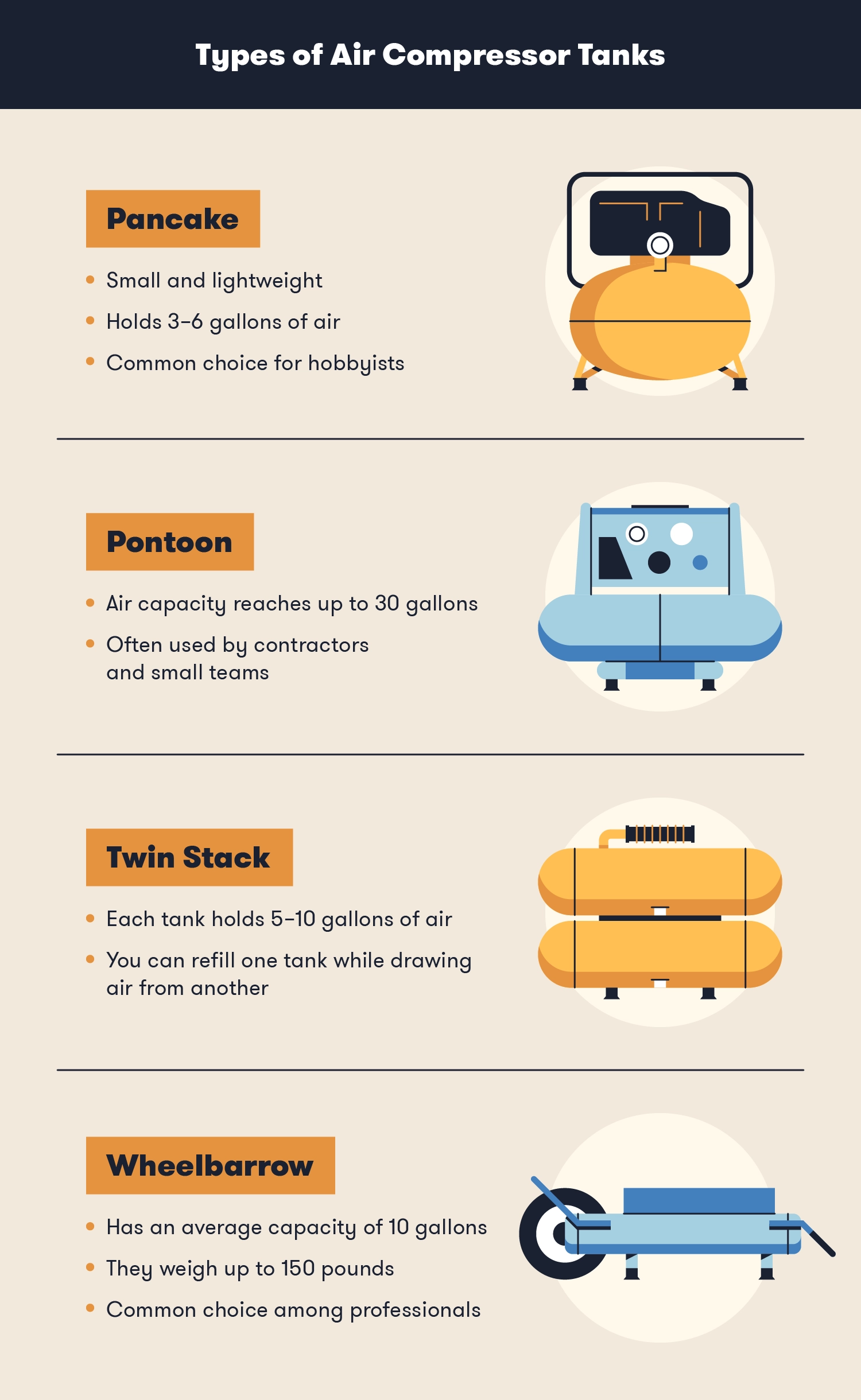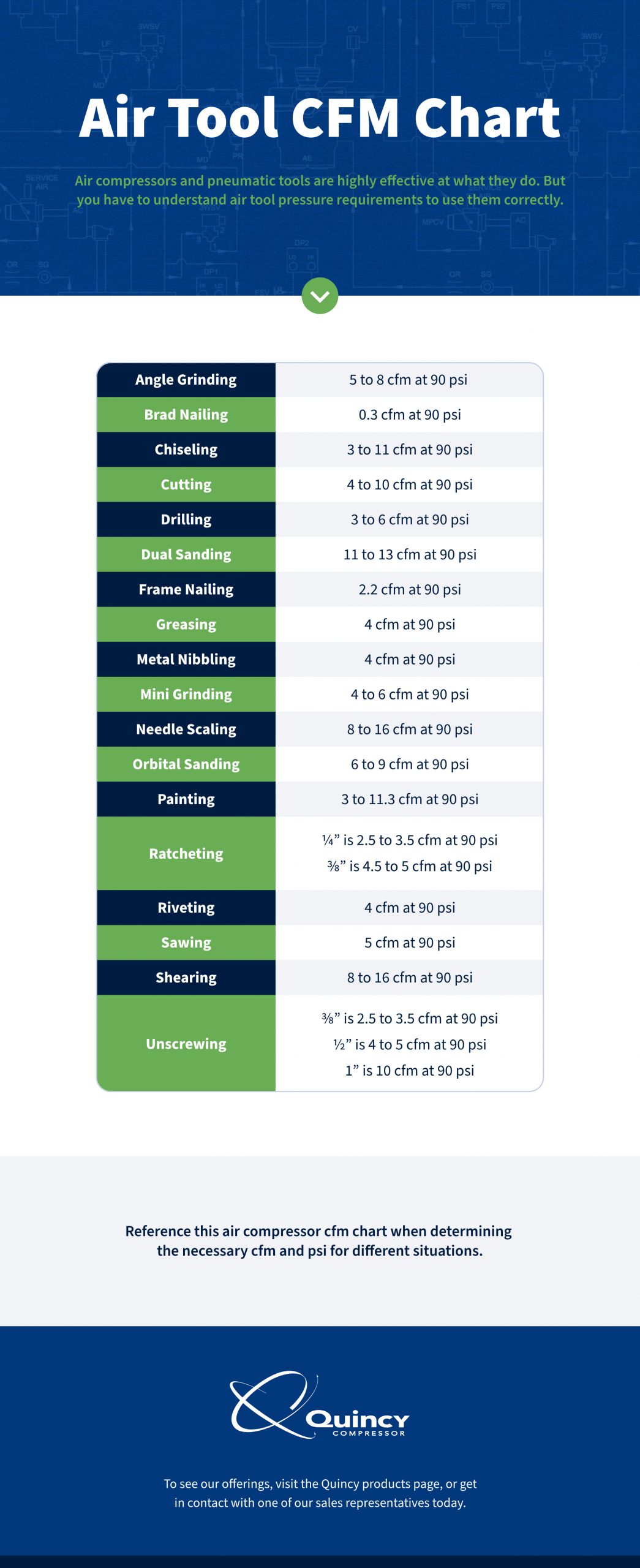The ideal air compressor size for running air tools is typically 20 gallons or more. For power tools, a 30-gallon compressor is recommended.
Choosing the right air compressor is crucial for the efficient operation of your air tools and power tools. Compressors come in various sizes, and selecting one that matches the demands of your tools ensures optimal performance. A 20-gallon compressor is generally suitable for most air tools, providing enough power and air volume for tasks like inflating tires, operating nail guns, and spray painting.
For power tools requiring more continuous airflow, like impact wrenches and sanders, a 30-gallon compressor offers the necessary capacity. Investing in the right size compressor not only enhances tool efficiency but also prolongs their lifespan.
Importance Of Air Compressor Size
Choosing the right air compressor size is crucial. It ensures that your air tools function properly. Using the wrong size can lead to problems. A well-sized compressor boosts performance and saves energy.
Impact On Performance
The size of your air compressor affects tool performance. A small compressor may not provide enough air pressure. This can make your tools work slower or even stop working. A properly sized compressor ensures smooth operation.
Different tools need different air pressures. For example, a nail gun needs less air than a sander. Knowing your tool’s requirements helps you pick the right compressor size. This ensures that every tool works at its best.
Energy Efficiency
A well-sized air compressor is more energy efficient. Running an oversized compressor wastes energy. This leads to higher electricity bills. On the other hand, a small compressor has to work harder. This also uses more energy and can wear out the compressor.
By choosing the right size, you save energy and money. It also extends the life of your compressor. This makes your investment more worthwhile.

Types Of Air Compressors
Rotary screw compressors.” name=”description”/>Choosing the right air compressor is crucial for running your air tools efficiently. There are various types of air compressors, each with unique features and benefits. Understanding these types will help you make an informed decision for your power tools.
Piston Compressors
Piston compressors, also known as reciprocating compressors, are the most common type. They use a piston driven by a crankshaft to deliver air at high pressure. This type is suitable for tasks that require intermittent air supply.
- Ideal for small workshops.
- Commonly used for nail guns and impact wrenches.
- Available in single-stage and two-stage models.
| Feature | Single-Stage | Two-Stage |
|---|---|---|
| Pressure | Up to 150 PSI | Up to 200 PSI |
| Best For | Light to moderate tasks | Heavy-duty tasks |
Rotary Screw Compressors
Rotary screw compressors are designed for continuous operation. They use two rotors that compress the air as it passes through. This type is ideal for industrial applications and heavy-duty tasks.
- Highly efficient and reliable.
- Suitable for large-scale operations.
- Requires less maintenance compared to piston compressors.
- Continuous air supply.
- Lower noise levels.
- Longer lifespan.
Key Factors To Consider
Choosing the right air compressor for your power tools is essential. The right size ensures efficiency and longevity of your tools. To make an informed decision, consider several key factors.
Cfm Requirements
CFM stands for Cubic Feet per Minute. It measures the volume of air the compressor delivers. Different tools need different CFM levels.
Refer to the table below to see the CFM requirements of common air tools:
| Air Tool | Minimum CFM |
|---|---|
| Impact Wrench | 2-5 CFM |
| Air Ratchet | 3-6 CFM |
| Paint Sprayer | 6-8 CFM |
Always ensure your compressor meets or exceeds the tool’s CFM.
Psi Levels
PSI stands for Pounds per Square Inch. It measures the pressure of the air delivered. Most air tools operate at 90 PSI.
Check your tool’s PSI requirement. Ensure your compressor provides the necessary pressure. Here’s a quick reference:
- Light-duty tools: 70-90 PSI
- Medium-duty tools: 90-120 PSI
- Heavy-duty tools: 120-150 PSI
Make sure your compressor can maintain the needed PSI under load.

Common Air Tools And Their Needs
Choosing the ideal air compressor size depends on the type of air tools. Different tools have different air requirements. Knowing these requirements helps in selecting the right compressor. Let’s explore the needs of common air tools.
Nail Guns
Nail guns are popular for construction and carpentry work. They require short bursts of air. Most nail guns need 0.5 to 4 CFM (Cubic Feet per Minute) at 70-90 PSI (Pounds per Square Inch). A portable air compressor with a small tank is usually enough.
- Framing Nailers: 2.2 – 2.5 CFM at 70-120 PSI
- Finish Nailers: 0.5 – 1 CFM at 60-90 PSI
- Brad Nailers: 0.3 – 0.5 CFM at 60-100 PSI
Impact Wrenches
Impact wrenches are used for tightening and loosening bolts. They need a continuous supply of air. Most impact wrenches require 4 to 5 CFM at 90 PSI. A compressor with a larger tank is suitable.
- 1/2-inch Impact Wrench: 4 – 5 CFM at 90 PSI
- 3/8-inch Impact Wrench: 2 – 3 CFM at 90 PSI
- 1/4-inch Impact Wrench: 1 – 1.5 CFM at 90 PSI
Understanding these air requirements ensures efficient tool performance. Matching the compressor size to tool needs is crucial. This ensures smooth and uninterrupted work.
Sizing Guide For Home Use
Choosing the right air compressor size is crucial for home use. The right size ensures efficiency and prevents tool damage. Below is a guide to help you choose the best air compressor for your home projects.
Diy Projects
For DIY enthusiasts, an air compressor is essential. It makes tasks easier and quicker. Common DIY tasks include nailing, painting, and inflating tires.
A small compressor with 2-6 gallons tank size works well. It can handle light to moderate tasks. The air pressure (PSI) should be around 90 PSI.
Here’s a quick reference:
| Tool | Tank Size | PSI |
|---|---|---|
| Nail Gun | 2-4 gallons | 70-90 PSI |
| Paint Sprayer | 4-6 gallons | 90 PSI |
| Tire Inflator | 2-3 gallons | 90 PSI |
Small Workshops
In a small workshop, air tools are used more frequently. This requires a larger compressor. Common tools include sanders, grinders, and drills.
A compressor with 8-20 gallons tank size is ideal. The air pressure (PSI) should be around 90-100 PSI. This ensures consistent performance.
Consider the following:
- Check the tool’s CFM requirement.
- Choose a compressor with matching CFM.
- Ensure the tank size supports continuous use.
Here’s a quick reference:
| Tool | Tank Size | PSI |
|---|---|---|
| Sander | 10-20 gallons | 90 PSI |
| Grinder | 10-20 gallons | 90-100 PSI |
| Drill | 8-15 gallons | 90-100 PSI |
Choosing the right air compressor size enhances your productivity. It ensures your tools run efficiently.
Sizing Guide For Professional Use
Choosing the right air compressor is vital for professional jobs. The correct size ensures efficiency and cost-effectiveness. This guide helps professionals find the ideal compressor for their specific needs.
Automotive Shops
Automotive shops need high-capacity air compressors. These compressors handle multiple tools at once. Here are key specifications:
- Tank Size: 60-80 gallons
- CFM (Cubic Feet per Minute): 10-15 CFM
- PSI (Pounds per Square Inch): 90-120 PSI
Using a table, we can compare different models:
| Model | Tank Size (gallons) | CFM | PSI |
|---|---|---|---|
| Model A | 60 | 12 | 100 |
| Model B | 80 | 15 | 120 |
Construction Sites
Construction sites require robust and portable compressors. They power nailers, drills, and other tools. Key specifications include:
- Tank Size: 20-30 gallons
- CFM: 4-8 CFM
- PSI: 90-100 PSI
Below is a table to compare various models:
| Model | Tank Size (gallons) | CFM | PSI |
|---|---|---|---|
| Model X | 20 | 6 | 90 |
| Model Y | 30 | 8 | 100 |
Top Air Compressor Recommendations
Choosing the right air compressor is important for your tools. The ideal size and power depend on your needs. Let’s look at some top recommendations for light use and heavy-duty use.
Best For Light Use
Light use air compressors are ideal for small tasks. These compressors are portable and easy to store. They are perfect for home projects and minor repairs.
| Model | Power | Tank Size | Price |
|---|---|---|---|
| Porter-Cable C2002 | 0.8 HP | 6 gallons | $129 |
| Bostitch BTFP02012 | 0.9 HP | 6 gallons | $99 |
| California Air Tools 2010A | 1 HP | 2 gallons | $164 |
Best For Heavy-duty Use
Heavy-duty air compressors are for bigger projects. These compressors are powerful and can run multiple tools. They are best for workshops and industrial use.
| Model | Power | Tank Size | Price |
|---|---|---|---|
| Ingersoll Rand SS5L5 | 5 HP | 60 gallons | $1,199 |
| Quincy QT-54 | 5 HP | 60 gallons | $1,499 |
| DeWalt DXCMV5048055 | 5 HP | 80 gallons | $1,299 |
Maintenance tips
Maintaining your air compressor ensures it runs efficiently. Proper care extends the life of your tools. Here are some essential maintenance tips to follow.
Regular Inspections
Conduct regular inspections to catch issues early. Check for leaks, wear, and tear. Inspect hoses and connections for damages.
- Examine the compressor tank for rust or corrosion.
- Check the oil level and change it regularly.
- Inspect air filters and clean or replace them.
A detailed inspection helps maintain performance. Use a checklist for thorough inspections.
Proper Storage
Store your air compressor in a cool, dry place. Ensure it is away from direct sunlight and moisture.
- Drain the tank to avoid rust.
- Cover the compressor to protect it from dust.
- Store hoses and tools properly to prevent damage.
Proper storage extends the compressor’s lifespan. Follow these tips for safe storage.
| Maintenance Task | Frequency |
|---|---|
| Oil Check | Monthly |
| Filter Cleaning | Quarterly |
| Tank Draining | After Every Use |
Keep your air compressor in top shape with these maintenance tips. Regular care ensures optimal performance and longevity.

Frequently Asked Questions
What Size Air Compressor Is Best For Air Tools?
An air compressor with a 20-gallon tank and 5-6 CFM is ideal. This size provides sufficient power for most air tools.
Can A Small Compressor Run Power Tools?
Yes, but performance may suffer. A small compressor may not provide enough CFM for continuous use of power tools.
How Many Cfm Do Air Tools Need?
Most air tools require 4-6 CFM. Always check the specific tool’s requirements to ensure proper compressor match.
Is A 30-gallon Air Compressor Enough?
Yes, a 30-gallon compressor is usually sufficient for most home and professional air tool applications.
Conclusion
Choosing the right air compressor size is crucial for optimal tool performance. Ensure you match the compressor to your power tools’ needs. This guarantees efficiency and longevity. Always consider factors like CFM and PSI. Investing in the appropriate compressor enhances productivity and safety.
Make a wise choice for seamless operations.

